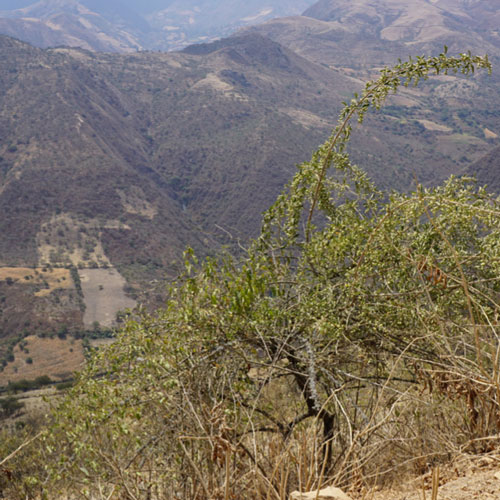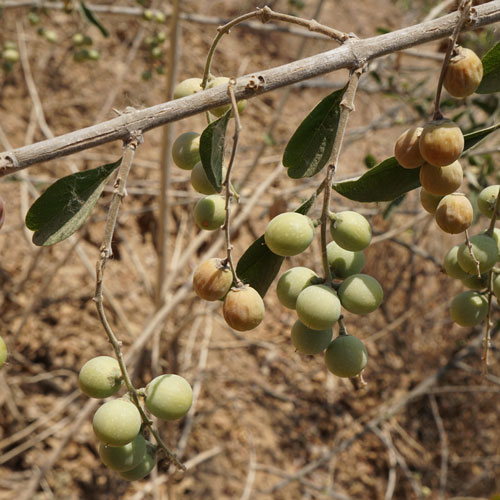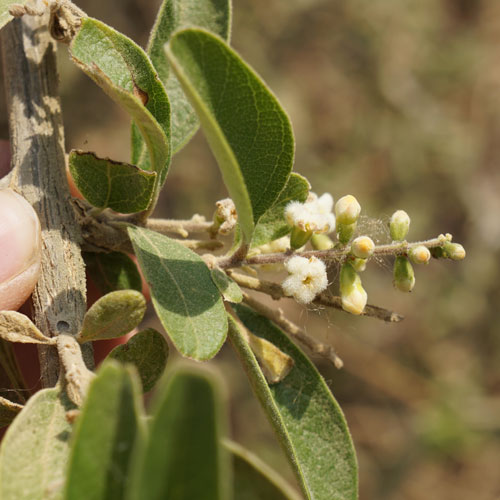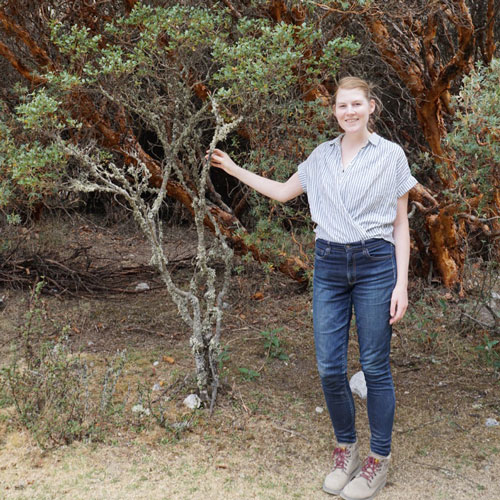



In September, 2016, Ph.D. student Laura Frost and her undergraduate assistant Sarah Tyson were searching northern Peru for Citharexylum for her dissertation research on the evolution and biogeography of these plants. Laura and her Ph.D. advisor, Burke Museum Herbarium Curator Dick Olmstead, had hunted Citharexylum together or individually throughout its range from Mexico and the Caribbean to Argentina, but the Andes of northern Peru and Ecuador were among the few remaining places they had not visited.
With over 100 species and no comprehensive monograph describing them all, it is hard to know what each species is when you find it. But Laura sensed that something was different about the collection she made that day.
The pale orange fruits were bigger than any she had seen before. A week later and 100 kilometers away, she encountered another plant like it. One could just be a weird variant of a common species; two was more than coincidence.
Half a continent away, Nataly O’Leary, of the Instituto de Botanica Darwinion in Buenos Aires, Argentina, and Dick’s long-time collaborator, was poring over herbarium specimens of Citharexylum. She is working on the first ever monograph of Citharexylum that will include descriptions of every species.
To complete such a detailed study requires examining as many specimens as possible to determine species limits. In front of her were specimens from the US National Herbarium at the Smithsonian, the Field Museum in Chicago, and the Missouri Botanical Garden, as well as from herbaria in Argentina. She had set aside a few specimens that seemed different from any species previously known to science. These specimens differed from other species in the size of leaves and small hairs on the leaf surfaces, but also in their large fruits.
Upon her return to Seattle, Laura wrote to Nataly to tell her of her discovery. Both Laura and Nataly were equally surprised by the coincidence of their discoveries. They proceeded to name the new species Citharexylum peruvianum and publish it in the journal Systematic Botany.
This tale of two discoveries illustrates two themes of biodiversity discovery.
Studies have shown expert collectors find new species at much higher rate than do less highly trained field biologists. In other words, it is not enough to simply collect lots of specimens and hope to find something new. Having trained eyes to see differences in nature leads to a greater chance of discovering new species. Laura’s discovery of Citharexylum peruvianum exemplifies this theme.
However, it has also been shown that most species that are not known to science have specimens hiding away in museums for years before someone with a trained eye sees them for what they are. A study published in 2010 showed that nearly one quarter of all newly described plant species had been first collected more than 50 years before they were described. Nataly’s study of herbarium specimens exemplifies this; the oldest known herbarium specimen of Citharexylum peruvianum was collected in 1951—67 years before Nataly recognized it as a new species!
Coda. The most extensive collection of plants from northern Peru, where this species occurs, was found in the herbarium at the Universidad Privada Antenor Orrego in Trujillo, Peru. Built up over many years largely by the extensive fieldwork of two Peruvian botanists, Abundio Segástegui and Segunda Leiva, the entire herbarium was destroyed by fire in 2010. No one will ever know how many specimens of Citharexylum peruvianum were lost, or how many other species unknown to science were lost with them.

